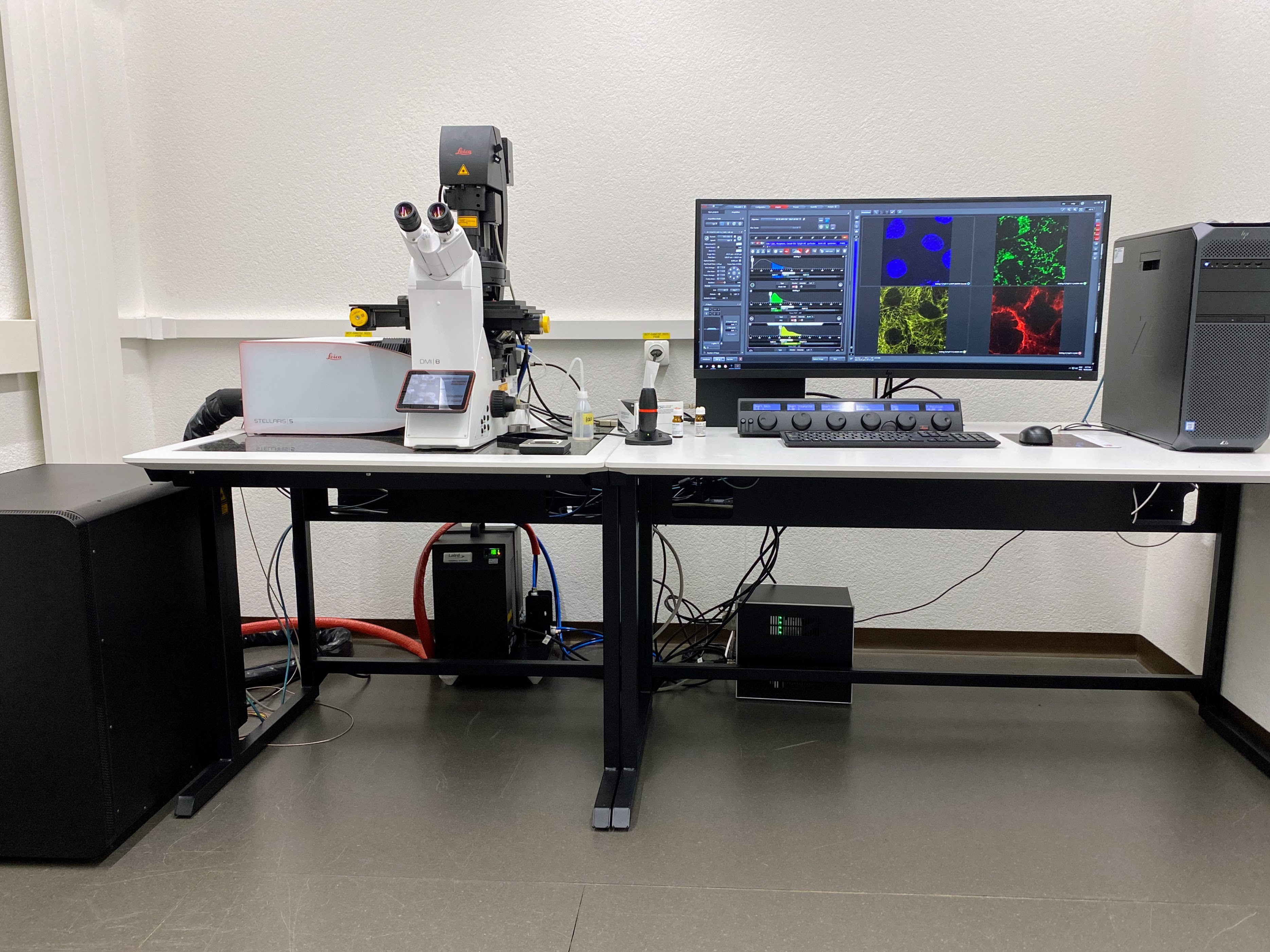CLSM - Leica Stellaris 5 inverse (Bot)

The Leica STELLARIS 5 is an advanced automated inverse confocal laser scanning microscope. It offers the capability of simultaneously capturing three distinct fluorescent channels alongside a high-quality transmission bright-field channel. Featuring the cutting-edge TauSense technology, it provides real-time access to lifetime-based data, enriching your experiments with valuable insights. This system is particularly well-suited for examining fixed samples
Location
BOT Room M2-19, Zollikerstrasse 107, 8008 Zürich.
Training Request
Follow this link to apply for an introduction to the microscope.
Technical Specifications
Light sources and lasers
- Halogen lamp for transmitted light
- External fluorescence light source - Lumencor LED 3
- 405 nm diode laser
- Leica white light laser (WLL - 485 nm to 685 nm excitation)
Scanners
Dual scanning system:
Regular scanner: 1 - 2600 Hz
Resonant scanner: 8000 Hz
Objectives
| Name | Magnification | NA | Immersion | WD (mm) |
|---|---|---|---|---|
| HC PL APO CS2 | 10 | 0.4 | Air | 2.56 |
| HC PL APO CS2 | 20x | 0.75 | Air | 0.62 |
| HC PL APO CS2 | 40x | 1.25 | Glycerol | 0.35 |
| HC PL APO CS2 | 63x | 1.4 | Oil | 0.14 |
| HC PL APO CS2 | 63x | 1.3 | Glycerol | 0.3 |
CS2 objectives: improved color correction, perfect VIS-405; IMM = multi immersion (either water, glycerol or oil)
Detector System
3 Hybrid (Power HyD S) detectors, and one additional detector for transmission (Trans PMT). Excitation controlled by AOTF. Accurate emission detection by spectral detectors.
Fluorescence Filters
| Name | Excitation Range | Excitation Filter | Dichroic | Emission Filter |
|---|---|---|---|---|
|
LED_405 |
UV | BP 405/60 | 455 | BP 470/40 |
| GFP | blue | BP 470/40 | 495 | BP 525/50 |
| RHOD | green | BP 546/10 | 560 | BP 585/40 |
Make sure to acknowledge the Center for Microscopy in your publication to support us.
How to acknowledge contributions of the Center for Microscopy
Remarks
This microscope offers enhanced axial resolution compared to traditional widefield microscopes. With the latest TauSense technology, it provides immediate access to lifetime-based data, augmenting the depth of information available for your experiments. Furthermore, in addition to capturing multi-color images in fixed samples, the microscope can fully automate the acquisition of large tile scans, all thanks to the LAS X Navigator.
Literature and Links
Further information (internal UZH use only)
Follow this link for further background information, documents and links
Responsible Persons
If you have questions about the device please contact the responsible person.
Make sure to acknowledge the Center for Microscopy in your publication to support us.
How to acknowledge contributions of the Center for Microscopy